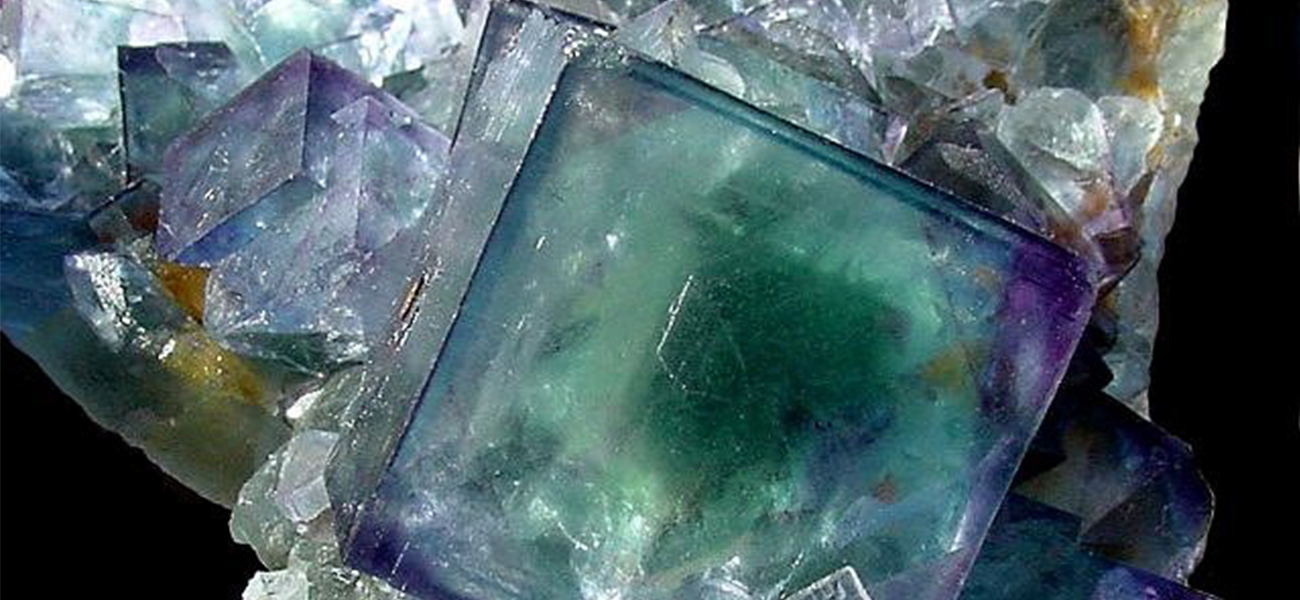| << Chapter < Page | Chapter >> Page > |

In [link] , we see a close-up image of the mineral fluorite, which is commonly used as a semiprecious stone in many types of jewelry because of its striking appearance. These solid deposits of fluorite are formed through a process called hydrothermal precipitation. In this process, the fluorite remains dissolved in solution, usually in hot water heated by volcanic activity deep below the earth, until conditions arise that allow the mineral to come out of solution and form a deposit. These deposit-forming conditions can include a change in temperature of the solution, availability of new locations to form a deposit such as a rock crevice, contact between the solution and a reactive substance such as certain types of rock, or a combination of any of these factors.
We previously learned about aqueous solutions and their importance, as well as about solubility rules. While this gives us a picture of solubility, that picture is not complete if we look at the rules alone. Solubility equilibrium, which we will explore in this chapter, is a more complex topic that allows us to determine the extent to which a slightly soluble ionic solid will dissolve, and the conditions under which precipitation (such as the fluorite deposit in [link] ) will occur.

Notification Switch
Would you like to follow the 'Chemistry' conversation and receive update notifications?